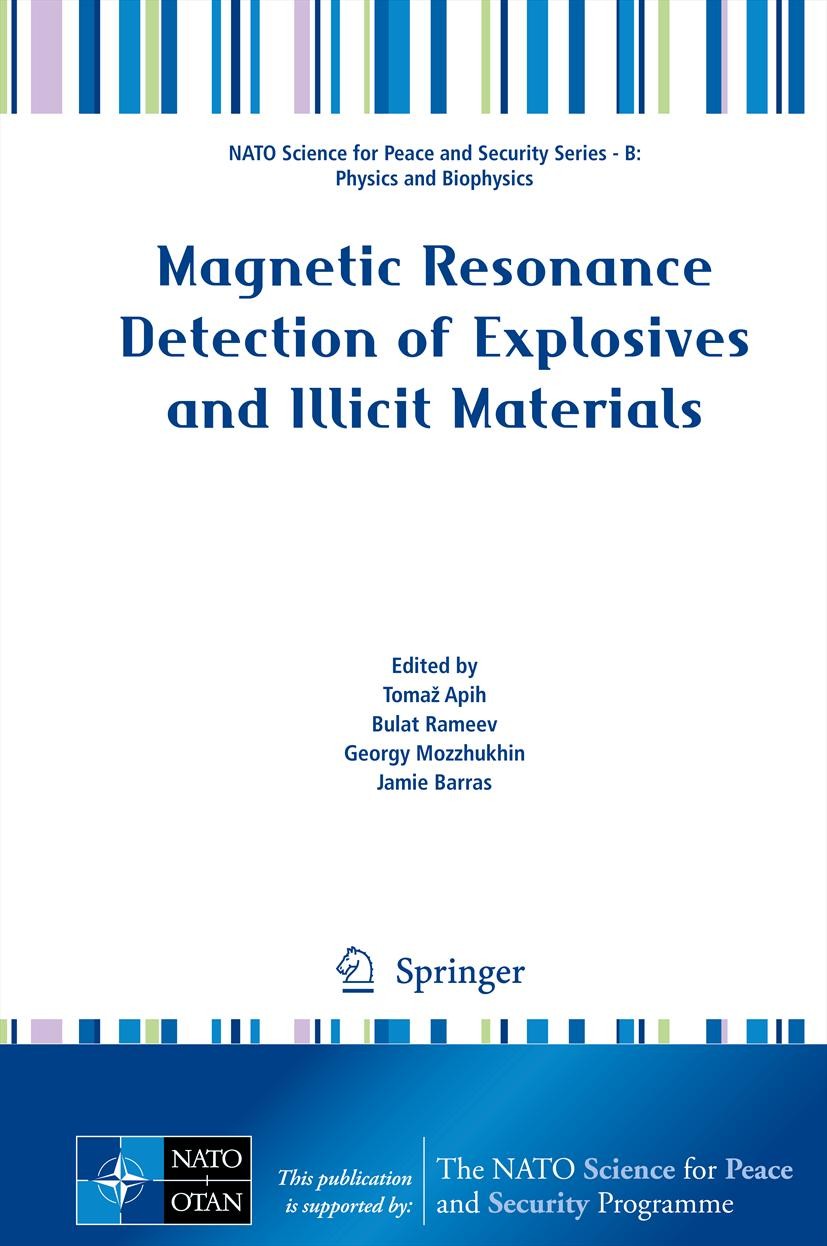| 書(shū)目名稱(chēng) | Magnetic Resonance Detection of Explosives and Illicit Materials |
| 編輯 | Toma? Apih,Bulat Rameev,Jamie Barras |
| 視頻video | http://file.papertrans.cn/622/621313/621313.mp4 |
| 概述 | Covers both detection of solid explosives by NQR and liquid explosives by NMR.Comprehensive review of recent progress and opened problems.Progress in 14N nuclear quadrupole resonance techniques |
| 叢書(shū)名稱(chēng) | NATO Science for Peace and Security Series B: Physics and Biophysics |
| 圖書(shū)封面 |  |
| 描述 | .Detection of concealed explosives is a notoriously difficult problem, and many different approaches have been proposed to solve this problem. Nuclear quadrupole resonance (NQR) is unique in many ways. It operates in a safe AM radio frequency range, and it can remotely detect unique “fingerprint” (NQR spectrum) of many explosives, such as TNT or RDX. As such, the detection of target does not depend on the shape or material of the container, or the presence of metallic object such as triggers etc. Spectra of chemically similar compounds differ enough that their presence never causes interference or false alarms. Unfortunately, widespread use is prevented due to low sensitivity, radiofrequency interference from the noisy environment, and inability to detect liquid explosives. This book presents current state of the art of the attempts to overcome NQR sensitivity problem, either by increasing the strengths of signals generated, or by increasing the specificity of the technique through a better understanding of the factors that affect the quadrupolar parameters of specific explosives. The use of these specific quadrupolar parameters is demonstrated on signal processing techniques that |
| 出版日期 | Conference proceedings 2014 |
| 關(guān)鍵詞 | Detection of Bulk Explosives; Detection of Liquid and Solid Explosives; Nuclear Quadrupole Resonance |
| 版次 | 1 |
| doi | https://doi.org/10.1007/978-94-007-7265-6 |
| isbn_softcover | 978-94-007-7267-0 |
| isbn_ebook | 978-94-007-7265-6Series ISSN 1874-6500 Series E-ISSN 1874-6535 |
| issn_series | 1874-6500 |
| copyright | Springer Science+Business Media Dordrecht 2014 |
 |Archiver|手機(jī)版|小黑屋|
派博傳思國(guó)際
( 京公網(wǎng)安備110108008328)
GMT+8, 2025-10-16 10:57
|Archiver|手機(jī)版|小黑屋|
派博傳思國(guó)際
( 京公網(wǎng)安備110108008328)
GMT+8, 2025-10-16 10:57


